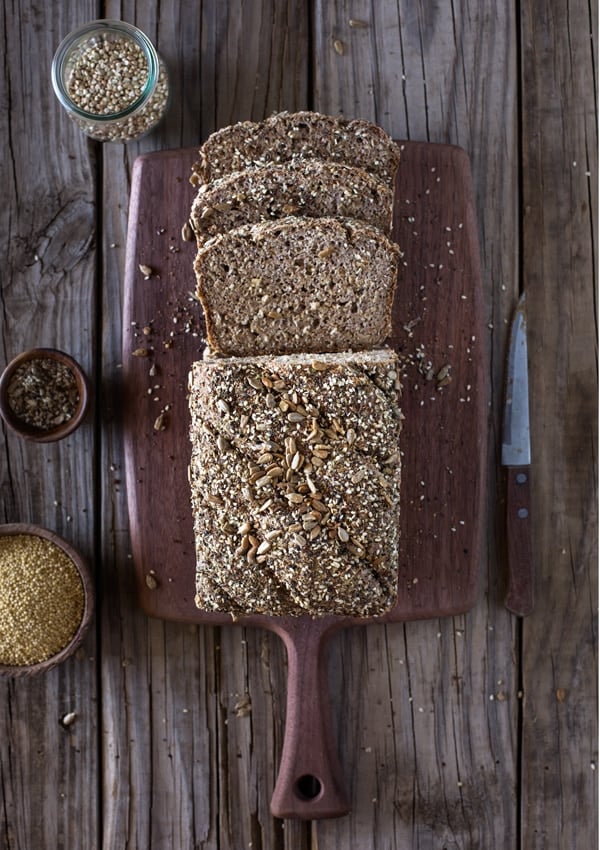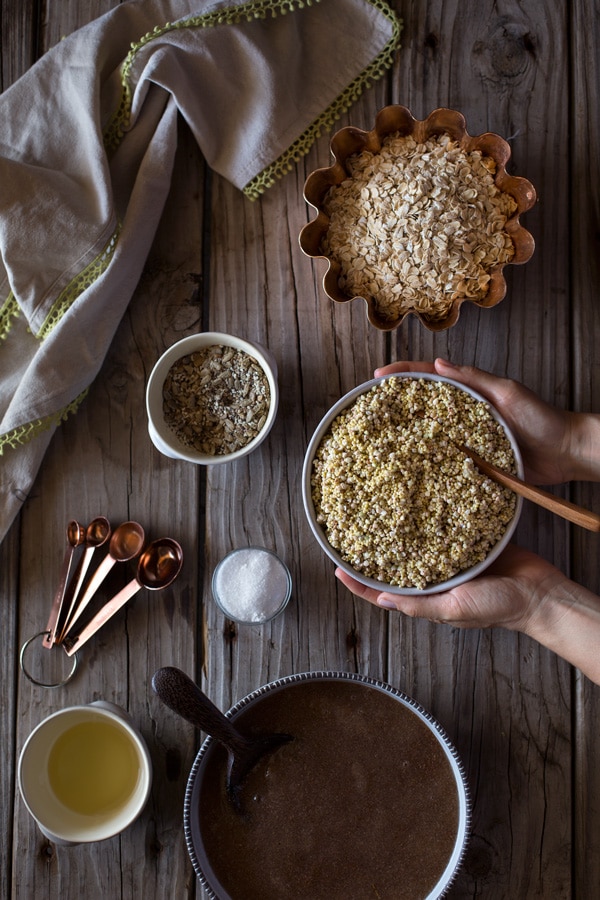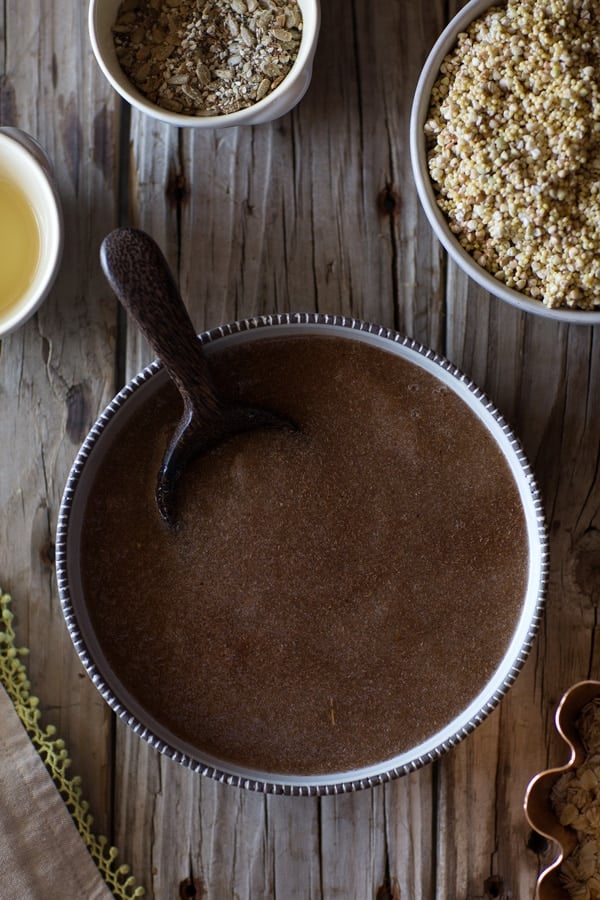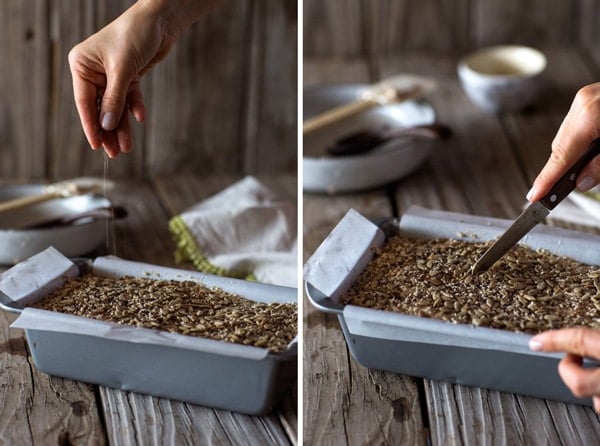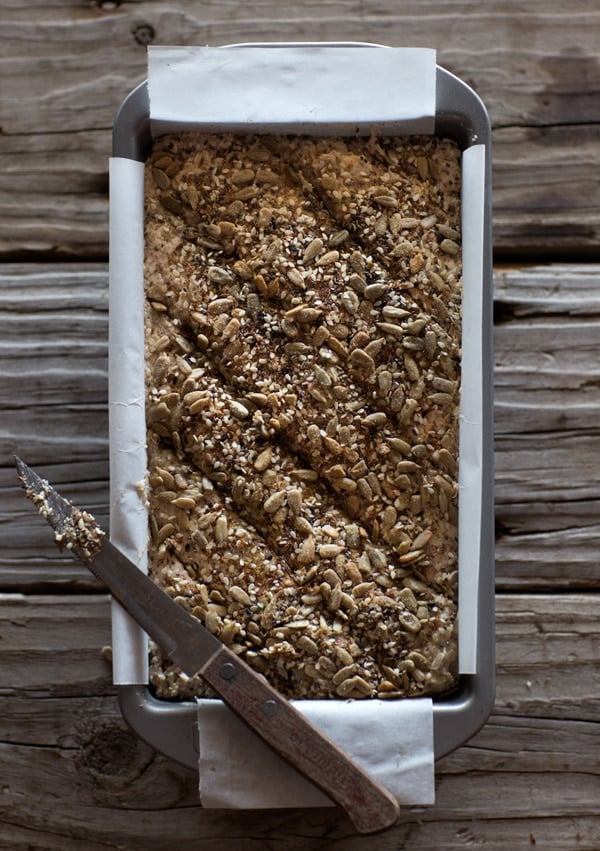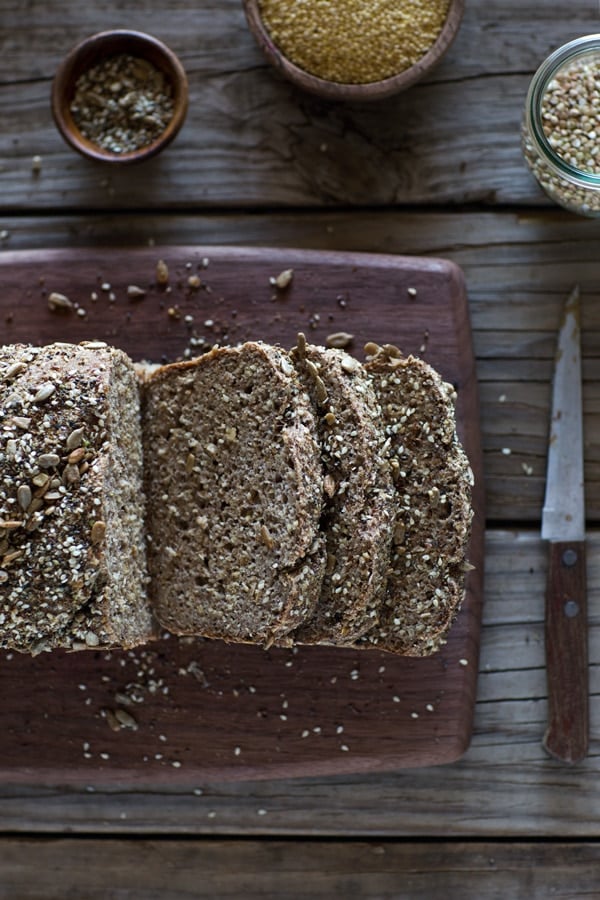To be honest, I wanted to read more about it not because it was gluten-free, but because it was made with using millet and buckwheat (both of which are super healthy grains) instead of all-purpose flour. Even though there are many similar bread recipes out there on the Internet, I usually have a hard time figuring out where to start when it comes to baking bread using ancient grains. But when she posted this recipe, I knew that it would be a good one to start with. Luckily as suspected, it didn’t disappoint. This bread is so easy to make, even for someone like me, who is learning her way around the world of vegan/gluten-free baking. It also is foolproof. To make it, in addition to millet and buckwheat Amy uses an ingredient called psyllium seed husk (or also called psyllium husk). The first time I read about psyllium husk was a year ago, when David and Luise of Green Kitchen Stories posted a recipe called Cashew Rawgurt. It was basically yogurt made with cashews instead of milk. They used psyllium husk to give it a creamy consistency that was similar to the consistency of yogurt. But then, more and more I read about gluten-free and healthy baking ingredients, I realized that it is a much more of a common ingredient than I thought. After some research and surfing through the Internet, I found out that psyllium husk (the photo above is what it looks like after it was mixed with water):
Is a natural source of soluble fiber that doesn’t include wheat, and therefore it is gluten-free.Has multiple health benefits, because when mixed with liquids it turns into gel, which acts like a sponge and absorbs toxins in the digestive tract. Because of this reason, people with constipation and irregularity issues are advised to incorporate it into their diets.Is used in gluten-free baking, because due to its gel-like structure (when mixed with water/liquida), it acts like gluten giving body to baked goods. It is mostly used when baking gluten-free bread, pizza dough, rolls, pasta, etc.Is sold in the gluten-free baking section of the supermarkets as either in capsules or in powder form. (This recipe uses the powder form. In particularly, this brand.)
With all that being said, there are many resources on the Internet cautioning people as some allergic reactions to pysllium husk have been recorded. Therefore, if this is your first time consuming it, I recommend trying in a small dose before using it to bake bread. You could also do what I did; simply add a tablespoon of it in a smoothie (another popular way of incorporating it into your diet) to see if you react to it in a negative way. Luckily, both my husband and I were totally fine after we drank our smoothies.
About This Millet Buckwheat Recipe
In her blog post, Amy posted a halved version of this recipe. However, she suggested that it would be fine to double it, which is what I did. To make the dough, you use a food processor. If you have a regular 9-cup food processor like mine, you may find that when all the ingredients are placed in it, it may look like it is too much. For this reason, on my first try I made two separate batches, mixed them in a bowl, and then baked them together. But on my second try (which is the bread in the photos), I placed everything in the food processor at the same time. It was quite full, but I stopped every 8-10 seconds to scrape the bowl during the process to make sure that everything is mixing evenly. Either way, they both turned out nicely. So it is totally up to you and your preference. Also if you want, you can half the recipe for a smaller loaf. On a final note, it is imperative to score the bread twice- once before it goes into the oven and an additional time after it has been baking for 40 minutes. Doing so lets some air into the dough for it to cook properly. Since it is better to score it in the same place, I suggest sprinkling it with the seeds prior to scoring it for the first time. That way when it is time for you to score it again you can easily see the marks.
Other Gluten-Free Recipes You Might Be Interested In
Almond-Kasha Porridge with Ginger and PineappleOvernight Coconut Buckwheat PorridgeSorghum Pilaf with Lentils, Feta, and GrapesCreamy Mushroom Pasta with Fresh Peas and RicottaGluten-Free Almond Flour BreadNeed more inspiration? Check out all our bread recipes
This recipe is adapted from Amy Chaplin’s Gluten-Free Millet and Buckwheat recipe.
